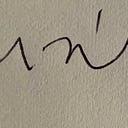China Made in Italy: questioning the notions of originality and authorship
When Gabriele Di Matteo started working with a group of Italian artisans in Naples to reproduce the most well-known paintings from famous Contemporary Chinese artists, he turned down -once again- the notion of author and exclusivity.
For the ‘China Made in Italy’ series, Di Matteo put back on stage the know-how of a group of anonymous commercial painters able to paint up to ten canvases a day -as in an automatic production line- who were very prolific until the eighties, when the Chinese painters found their way to develop the same technique for half the price.
Di Matteo selected one hundred artworks among the most significant Contemporary Chinese artists -from Social Realism to Cynical Realism and political Pop- like Zhang Xiaogang, Yue Minjun or Yin Jun.
The chosen pieces are then reproduced in their original size but in black and white, like the ‘serious’ european version of the original chinese paintings -usually joyful, carefree and full of colour.
I love the ironic statement. While Europe relocates its industrial production to China, Di Matteo shifts the production of Chinese paintings to Italy and while the artists of the original paintings are Superstars within the art market, the copycats are local unknown artisans. To me, both equally brilliant.
So, after the incessant chase of originality in the Contemporary art scene, my question is: it isn’t plagiarism a type of art itself?

